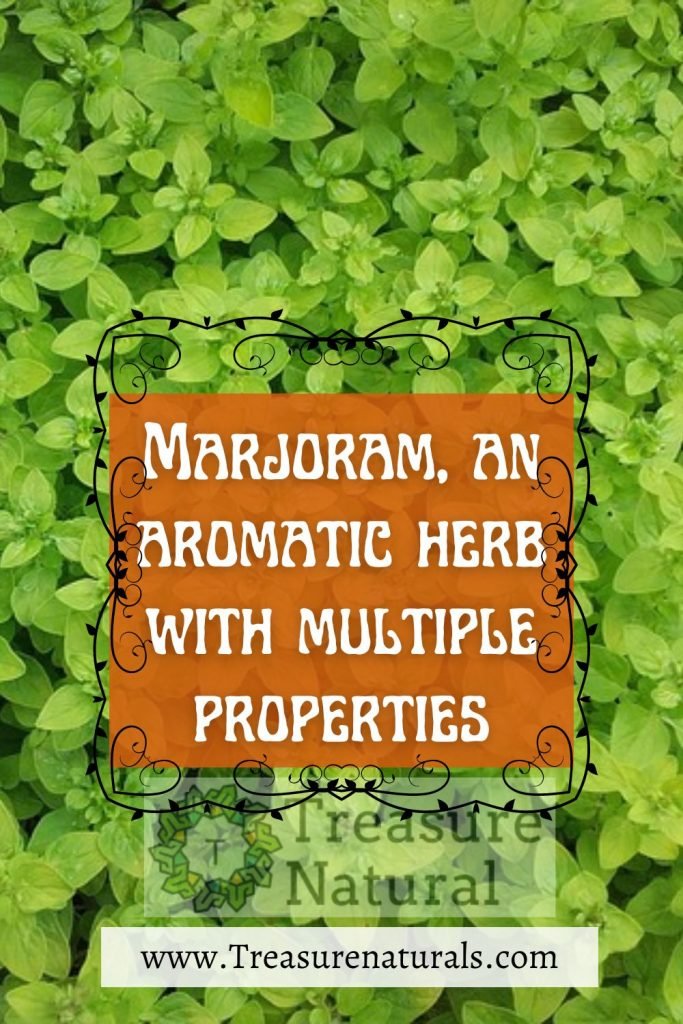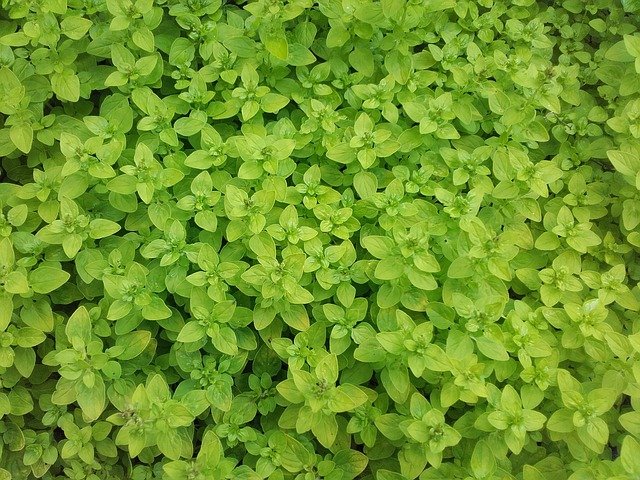
Its botanical name is origanum majorana, but it is better known as marjoram: an aromatic herb with multiple therapeutic properties, which we will get to know better today with a practical guide dedicated to all its benefits and uses.
Being also pleasant in appearance and easy to grow, marjoram is widely used in gardens as an ornamental plant and in the southern regions of the Peninsula it grows spontaneously on the edges of country roads and in vegetable gardens. But it is its properties and its multiple uses that make it valuable and popular with the public.
Marjoram beneficial properties
Like most aromatic plants, marjoram also boasts countless beneficial properties and lends itself to the most varied uses in the kitchen, herbal medicine and cosmetics.
The main therapeutic properties of marjoram depend on its components: water, fiber, sugars, proteins, fats, ashes, beta- carotene, folates, tannins, flavonoids and terpenes, mineral salts (potassium, magnesium, iron, manganese, calcium, copper, phosphorus, sodium and zinc) and vitamins (A, C, B1, B2, B3, B6, K and J).
For this reason, marjoram is considered a beneficial plant for the health of the whole organism and a formidable beauty ally.
This herb is grown primarily for industrial medicinal uses. To fully exploit all its properties, dried flowering tops are used. A good home method for drying marjoram and storing it from season to season is to cut the twigs, tie them into small bunches and hang them in a place sheltered from direct sunlight and well ventilated.
After drying, the bunches are kept in the dark in paper bags. Leaves and inflorescences are kept separately in glass jars to prepare herbal teas, decoctions and infusions to drink in case of colds, stomach pains and insomnia.
Nutritional properties
As anticipated, it is rich in active ingredients that are very important for health. Among the many vitamins it is rich in, marjoram abounds in vitamin C, contains essential oils, tannins and a bitter substance, rosmarinic acid, very useful for its digestive properties.
The caloric intake is modest, so much so that 100 grams of dried marjoram provide about 271 kcal in addition to:
- Protein 12.66 grams
- Carbohydrates 60.56 grams
- Sugars 4.09 grams
- Fat 7.04 grams
- Cholesterol 0 mg
- Dietary fiber 40.3 grams
- Sodium 77 mg
Medicinal properties
Being a bitter aromatic plant, among the most pronounced beneficial properties of marjoram we find the digestive, antispasmodic, expectorant and sedative properties that make it comparable to oregano.
Already in ancient Greece, it was used to treat joint and muscle pain, while the Romans, a little later, prepared miraculous ointments and compresses with marjoram to promote the healing of bruises, soothe menstrual pains, tone the stomach and heal the ocular conjunctivitis.
It is scientifically proven that the marjoram infusion, or the mother tincture, has a calming and soothing action on the stomach and uterine walls during the menstrual cycle. Furthermore, it stimulates the immune system and is particularly effective in the prevention and treatment of the most common diseases of the respiratory system, such as colds, bronchitis, coughs and asthma.
Moreover, given its sedative and relaxing properties, it is considered a real ‘anti-stress shield’, effective against insomnia, anxiety and other disorders of nervous origin. Marjoram also has bactericidal and antiseptic properties: its essential oil is indicated to combat bloating and flatulence.
As for the external use, this plant the essential oil of the plant is used for therapeutic massages and aromatherapy (by diluting a few drops directly in the bath water).
Cosmetic properties
In the cosmetic field, it is exploited above all for its antioxidant properties which make it an excellent beauty ally in the prevention of cellular aging. The high concentration of vitamin A, vitamin C, beta-carotene, lutein, zeaxanthin and carotenes ensures a ‘detox’ action capable of fighting free radicals.
In particular, vitamin A is essential for the health of the eyes, mucous membranes and skin. Zeaxanthin, in particular, protects the skin from UVA rays and prevents macular degeneration.
Marjoram in the kitchen
Like many other aromatic herbs, marjoram is also an ingredient suitable for seasoning foods.
The habit of using herbs in the kitchen is not only an excellent food choice for the palate, but also for the well-being of the whole organism as it allows you to moderate the amount of salt and fat without sacrificing flavor. In particular, this herb lends itself to accompanying dishes based on mushrooms, eggs and meat.
Given its intense and decisive aroma, the use of this aromatic herb is recommended raw or added when almost cooked.
Finally, it is also used for the preparation of herbal liqueurs and the famous Vermouth.
Home cultivation

It must be said that it is a fairly simple herb to grow, as it does not require special care and it reproduces easily even by cuttings, both in the plant and in the field. Fundamental for the development of this plant is the exposure which must be full sun.
Sowing in pots must be done in spring, preferably in April, while the best time for planting the cuttings is at the beginning of June.
The ideal soil for growing marjoram is well drained and made up half of sand, the other of soil. Watering must be regular but not excessive, sufficient to never completely dry up the earth. The development of the plant follows a bushy posture, which will be good to contain with regular pruning especially for growing in pots. The topping is important, which consists in removing the apexes and the flowers, so that the plant becomes thicker and stronger.
The flowering of the marjoram occurs between July and September when the leaves of the plant also lose their typical aroma: it will be good, in this regard, to remove the twigs intended for drying storage some time before.






